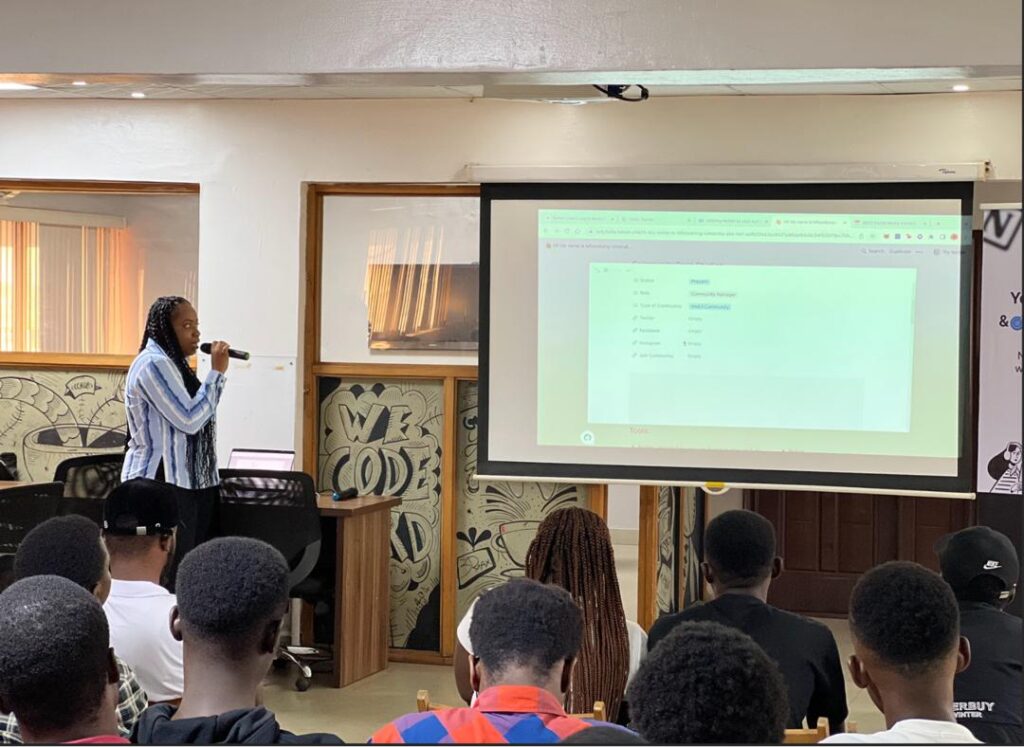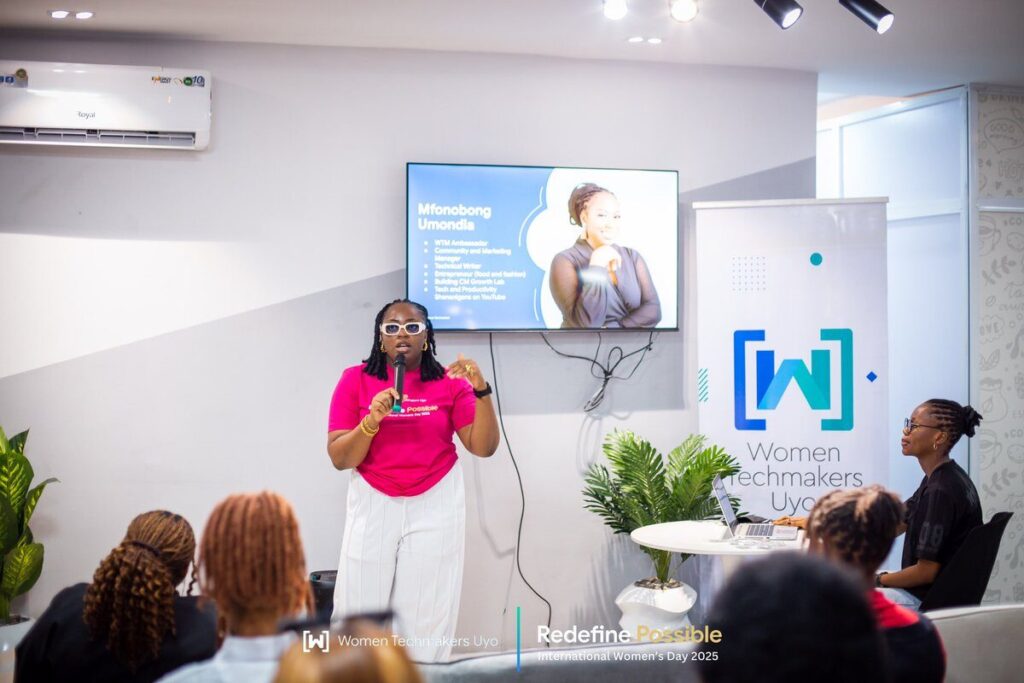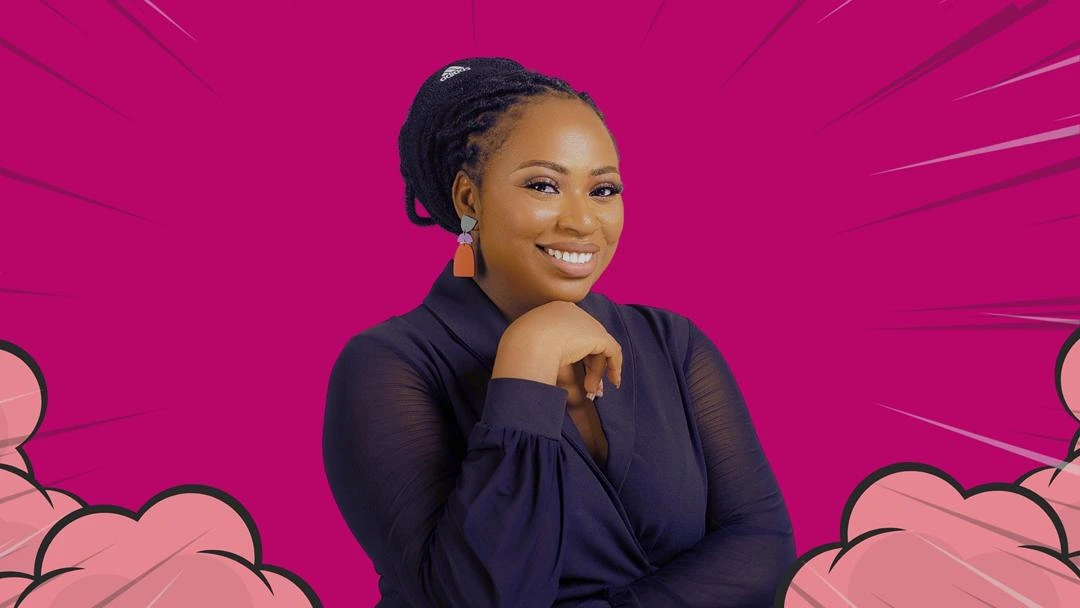Mfonobong Umondia spent her first year as a product designer struggling in silence. Too timid to ask for help, she watched other designers thrive while she fumbled through projects alone. The isolation nearly derailed her career before it began.
Then she attended a developer event in her city, Uyo, and something shifted. Watching developers gather to learn, share knowledge, and support each other, she thought: what if designers had this too? What if she didn’t have to figure everything out alone?
That question launched a career that would eventually touch tens of thousands of people across Africa.
A lesson in storytelling
Before Mfonobong became a community builder, she learned the power of showing up and speaking out. During a three-month internship at Hotels.ng, she didn’t have a laptop. She used her phone. She borrowed computers from colleagues. “Hey, are you free? Can I use your laptop for an hour?” became her daily refrain.
She could have hidden her struggle. Instead, she made noise about it. On Slack channels, on social media, anywhere people were listening. “I finished this internship. I did not have a laptop,” she posted, not expecting much.
The CEO of Hotels.ng noticed. He posted about her situation on Twitter. Two people offered to help. One followed through. She got her first laptop.
“That kind of made me see the importance of always sharing and being open-minded,” she says now. “The worst that can happen? Somebody will say no.”
That lesson, learned out of desperation, became the foundation of everything that followed.
Building something from nothing
When Figma opened its advocacy programme, Mfonobong saw her chance. The design software company wanted people to build mini communities in cities across the world, bringing designers together to learn and promote the tool.
She applied. She got in. Friends of Figma Uyo started with just her.
The community grew to over 100 members in just a few months of starting. They hosted virtual events and in-person meetups. They created mentorship programmes and virtual boot camps. Mfonobong kept talking about the work, sharing the wins and the frustrations, the challenges and the small victories.
Her regional lead noticed, and within two years, she went from managing a single community in Uyo to overseeing 40+ design chapters and thousands of community members across Africa. She moved from being a volunteer to working full-time. The once timid designer who couldn’t ask for help was now leading an ecosystem of thousands.
Learning as she built
Every role Mfonobong has held has always seemed bigger than her experience. She’s learned on the job, following a mantra that’s served her well: “if someone asks you to do something, you say yes and figure out how to do it”.
At Phase, a design tool launching beyond Korea, she had to create country launch playbooks from scratch. She’d never done it before. She reached out to people who had served in similar roles. She scheduled coffee chats to extract knowledge. She built standard operating procedures for identifying influencers across different platforms and regions.
“This person believed in me enough to ask me to do this thing, so I won’t fail the person,” she explains.
But learning alone doesn’t create impact. Umondia understood early that her work had to tie back to business goals. Communities need funding and support to survive, and organisations won’t fund what doesn’t serve them.

At Figma, she made sure community activities drove product adoption. Want to join the mentorship programme? Sign up on Figma first. The community existed to help designers grow, but it also helped Figma break into the African market. Everyone won.
Creating pathways, not just spaces
Most communities fail because they’re just spaces. A Telegram group. A WhatsApp chat. People join, maybe network a bit, then drift away.
Umondia builds differently. She designs journeys.
“I see community as an ecosystem, like a circle,” she explains. “If I joined this community, I should be able to join as a junior designer and grow to mid-level, grow to senior and even grow to the point where I become a director of design.”
At She Code Africa, where she currently works, this philosophy shapes everything. The organisation supports over 60,000 women in tech across the continent through academies, mentorship programmes, and leadership development initiatives.
But the Slack channel had gone quiet. Life happens. People move on. The churn rate had climbed too high.
Umondia and her team tried a new approach. They mapped out member profiles. How many entry-level members did they have? How many mid-level? How many seniors? Then they tailored specific activities to each group.
They sent personalised emails. They created channels for different specialisations, each with its own lead. They gave members spotlights through newsletters and a series called “Her Tech Story.”
Within two months, engagement jumped 4%. Women who’d gone silent started responding.
What’s missing in African tech
Umondia sees three things holding back sustainable community building in Africa: structure, funding, and collaboration.
Too many communities stop at creation. Someone makes a group, people join, then nothing happens. There’s no clear path for members. No understanding of what the organisation needs and what members need in return.

Funding remains a constant challenge. Not every community backed by a company has endless resources. People in rural areas want to learn but don’t have laptops, internet access, or even reliable electricity. Partnerships with hubs could help. So could equipment donations and scholarships.
Then there’s collaboration, both between communities and within them. Communities focused on women in tech could open up more, creating inclusive spaces that prepare women for the reality of working in male-dominated fields.
“At the end of the day, after they learn and grow, they will still be thrown back into the job market,” Umondia points out.
Building walls protects in the short term. Building bridges prepares people for the long term.
Advice for aspiring community builders
When people ask Umondia how to break into community management, she gives them practical homework: join an existing community and start contributing.
“I don’t think I’ve seen a community manager that just sits down and starts reading and automatically becomes a community manager,” she says. “They have to do two things side by side: learning and then doing.”
The learning part covers how communities work, how to engage people, and how to track data. The doing part happens in real communities with real people. Host events. Manage conversations. If a community doesn’t have a manager, pitch yourself as a volunteer.
Build credibility through impact, even unpaid. That’s how you get the paid roles later.
And keep talking about your work. Mfonobong built her career on intentional storytelling, consistently sharing what she was doing, what was working, and what wasn’t. She wrote articles. She made videos. She spoke at events whenever someone would have her.
From a designer who couldn’t ask for help to a leader managing communities of thousands, Umondia’s journey proves something simple but powerful: when you create space for people to grow, you grow too.
She’s spoken on global stages now. She’s built teams and trained community managers. She’s created launch strategies for international markets and boosted engagement for 60,000+ women across Africa.
But she still remembers being the person who needed help and didn’t know how to ask for it. That memory shapes every community she builds, every programme she designs, every person she mentors.
“I create communities that I would love to be a part of,” she says.
Get passive updates on African tech & startups
View and choose the stories to interact with on our WhatsApp Channel
Explore




